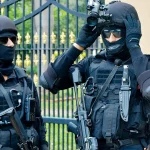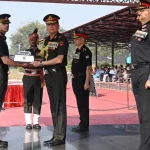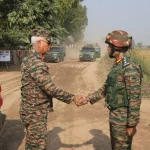The Word Association Test (WAT) is an insightful tool widely utilized in psychological assessments and recruitment processes. It serves to uncover an individual’s subconscious thoughts, emotions, and attitudes through immediate responses to given stimulus words. This approach is particularly valuable in contexts requiring a swift evaluation of qualities such as leadership, resilience, and positive thinking—traits crucial in roles like military and defence forces leadership.
The essence of the WAT lies in the participant’s ability to generate swift and instinctive associations that reveal their underlying psychological state. By assessing how individuals respond to various stimuli, interviewers can gain insights into their personalities, motivations, and suitability for leadership positions. This article delves into the significance of the WAT, providing 50 examples categorized into thematic groups, aimed at demonstrating the qualities that organizations may seek in candidates.
Historical Context of the Word Association Test
The roots of the Word Association Test can be traced back to the early 20th century, where it became integral to psychological theories focusing on the unconscious mind. Pioneered by notable psychologists such as Carl Jung, who utilized free association techniques, the test has evolved into a structured assessment tool used in both clinical settings and employment contexts.
Over decades, the WAT has adapted to various fields. In contemporary settings, particularly recruitment, it has become popular for evaluating candidates’ psychological resilience, interpersonal skills, and emotional intelligence—all critical aspects for success in dynamic and high-stakes environments.
Understanding the Structure of the WAT
The WAT typically consists of a series of stimulus words to which a participant responds with the first word or phrase that comes to mind. Responses are evaluated based on their positivity, relevance, and the underlying traits they may reflect.
Key Qualities Assessed:
- Emotional Intelligence: Understanding and managing one’s emotions and the emotions of others.
- Leadership Potential: Ability to inspire and guide others.
- Cognitive Flexibility: Capability to think creatively and adaptively.
- Positivity and Optimism: General positive orientation towards life and challenges.
Main Sections: Thematic Examples of Positive Word Associations
The following sections outline 50 positive word association examples categorized into significant themes, showcasing the type of responses that demonstrate desirable qualities in candidates.
Leadership and Teamwork
- Leader – Inspires action.
- Teamwork – Collective achievement.
- Cooperate – Enhances performance.
- Mentor – Guides growth.
- Vision – Forward-thinking perspective.
Leadership often demands the ability to inspire and unite people. The banks of positive associations here demonstrate traits like inspiration and collective effort, essential in creating effective teams.
Personal Growth and Development
- Challenge – Opportunity for growth.
- Failure – Learning experience.
- Discipline – Steadfast commitment.
- Determination – Resolve to persist.
- Progress – Continuous improvement.
Personal growth is pivotal in both personal and professional realms. The associations signify resilience and a willingness to embrace difficulties as catalysts for enhancement.
Positive Traits and Values
- Honesty – Foundation of trust.
- Respect – Earned recognition.
- Integrity – Moral principles.
- Courage – Action despite fear.
- Empathy – Understanding others.
These attributes are vital in fostering a harmonious workplace. The ability to communicate honestly and with respect directly influences team dynamics and organizational culture.
Emotional and Psychological Well-being
- Joy – Inner fulfillment.
- Peace – Internal harmony.
- Happiness – Contentment.
- Love – Selfless devotion.
- Contentment – Satisfaction.
These associations highlight the importance of emotional well-being, signifying a positive and balanced mindset that can improve overall productivity and work relationships.
Motivation and Ambition
- Ambition – Aspiration towards goals.
- Motivation – Drive to succeed.
- Passion – Enthusiasm for pursuits.
- Success – Achievement of goals.
- Goals – Clear targets.
Motivation and ambition are key indicators of a candidate’s drive. The positive responses related to these themes often reflect a proactive and goal-oriented attitude.
Additional Positive Associations
The following words frequently appear in WATs, demonstrating consistently constructive attitudes:
- Gratitude – Appreciation for what one has.
- Kindness – Compassionate behavior.
- Generosity – Willingness to give.
- Trust – Reliance on others.
- Confidence – Self-assuredness.
- Optimism – Positive expectation.
- Inspiration – Creative stimulation.
- Compassion – Tender concern for others.
- Honesty – Truthfulness in interactions.
- Humility – Modesty regarding one’s importance.
- Patience – Calm endurance under stress.
- Empowered – Feeling capable and in control.
- Blessed – Feeling fortunate or gifted.
- Serene – Calm and untroubled state.
- Flourishing – Thriving and growing.
- Triumphant – Victory over challenges.
- Bold – Daring and courageous actions.
- Wise – Possessing deep understanding.
- Loving – Demonstrating affection.
- Free – Liberty and independence.
- Wonderful – Exceptional in quality or character.
These examples encapsulate a wide array of positive dispositions essential for effective interpersonal dynamics and personal growth.
Purpose and Utility of the WAT
The utility of the Word Association Test is multifaceted, particularly in recruitment contexts where employers aim to assess qualities such as leadership potential, initiative, psychological resilience, and an overall positive outlook. Candidates are expected to respond quickly with relevant thoughts or phrases that highlight favorable personality traits and attitudes.
Statistical Data and Research Insights
A study conducted by the American Psychological Association highlighted that assessments like the WAT are predictive of performance in various contexts, especially in high-pressure environments such as the military and corporate leadership. Research findings indicate that positive word associations correlate highly with successful leadership competencies, reinforcing the idea that discovering subconscious attitudes contributes significantly to selecting effective leaders.
Comparative Analysis: WAT and Other Psychological Assessments
When comparing the WAT to other psychological assessments—such as personality tests (e.g., Myers-Briggs Type Indicator) or behavioral assessments (e.g., DISC)—it becomes evident that WAT provides a more immediate snapshot of an individual’s emotional and psychological state. Personality tests may offer comprehensive insights over longer interactions, while the WAT provides an instant perspective that can be crucial for roles requiring swift decision-making.
Challenges and Solutions
While the WAT is a powerful tool, it faces challenges, including:
- Subjectivity: Interpretations of responses may vary among assessors.
- Cultural Context: Certain words may have different positive connotations across cultures.
To address these concerns, organizations should standardize their assessment protocols, incorporate cultural sensitivity training for assessors, and blend WAT results with other assessment methods for comprehensive evaluations.
Future Trends and Predictions
As organizations continue to emphasize psychological well-being and emotional intelligence, the demand for WAT and similar assessments is likely to rise. Future trends may include:
- Integration with Technology: Use of AI and machine learning to analyze responses and detect patterns.
- Holistic Evaluations: Combining WAT with real-time performance metrics for more nuanced insights into candidate effectiveness.
- Increased Focus on Well-being: Assessments becoming part of health and wellness initiatives within organizations to foster positive workplace cultures.
Conclusion
The Word Association Test stands as an invaluable tool in the realms of psychological assessment and recruitment. With its capacity to reveal subconscious thoughts and attitudes, it provides a distinct lens through which potential and effectiveness can be evaluated. The curated examples illustrate the profound and various nuances of human thought that align with desirable attributes in professional environments.
Organizations aiming for successful leadership and robust team dynamics should consider incorporating the WAT within their selection processes. By understanding the significance of positive word associations, recruiters can better identify candidates who embody the essential traits for success in their respective roles.
For those aspiring to undertake the WAT, resources such as SSBCrack and SSBCrackExams offer comprehensive materials and courses designed to prepare candidates effectively. Embracing the WAT not only enhances selection methodologies but also contributes to the creation of resilient and positive organizational cultures.












